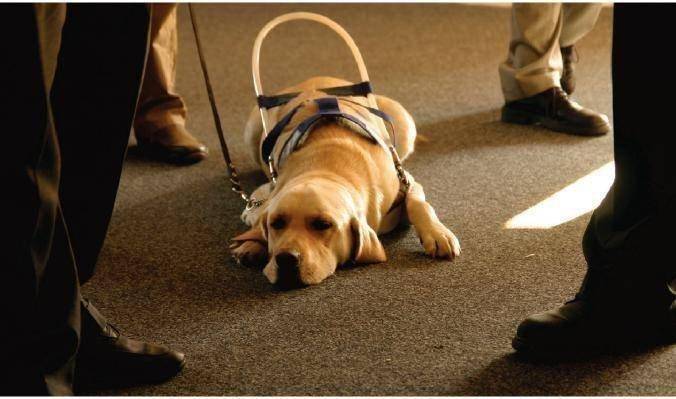It’s a common sight; a dog accompanying a person into a grocery store, locally owned business, banks. But, is this animal a service animal? Or does it fall under another classification by law?
A recent Business Expansion and Retention (BEAR) meeting touched on the subject of service animals and how they affect business through a presentation from the Utah State Office of Rehabilitation (USOR).
According to Thomas Smith. USOR’s Business Relations Specialist, there are three types of animals that act as human companions: comfort, therapy and service.
A comfort animal can come in many forms including furry, scaly, feathery, etc. A comfort animal, which can come with documentation, is any animal that provides comfort to a person with mental or physical deterrents.
A therapy animal goes a step further. These animals are trained to provide for more than one individual. Finally, a service animal is specifically trained to serve only one individual’s needs.
“Emotional support animals, comfort animals and therapy dogs are not service animals under Title II and Title III of the ADA,” theAmericans with Disabilities Act states. “Other species of animals, whether wild or domestic, trained or untrained, are not considered service animals either. The work or tasks performed by a service animal must be directly related to the individual’s disability.”
According to the requirements set forth by the Americans with Disabilities Act, a service animal means any dog that is individually trained to do work or perform tasks for the benefit of an individual with a disability, including a physical, sensory, psychiatric, intellectual or other mental disability.
“Titles II and III of the ADA makes it clear that service animals are allowed in public facilities and accommodations,” the ADA shares. “A service animal must be allowed to accompany the handler to any place in the building or facility where members of the public, program participants, customers or clients are allowed.”
At the same time, the ADA requires that accommodations must be made for employees with disabilities that requires services of an animal.
“Laws prohibit employment discrimination because of a disability,” the ADA shares. “Employers are required to provide reasonable accommodation. Allowing an individual with a disability to have a service animal or an emotional support animal accompany them to work may be considered an accommodation.”
However, there are exceptions. According to Smith, a business owner may request a service animal be removed from the premises if it is causing a major disruption or destruction, which often indicates that the animal is untrained or is not a true service animal. But, if a service animal is requested to leave, the business would have to be able to provide the service the animal was giving to the visiting individual.
“The handler is responsible for the care and supervision of his or her service animal,” the ADA states. “If a service animal behaves in an unacceptable way and the person with a disability does not control the animal, a business or other entity does not have to allow the animal onto its premises.”
While there are steps that business owners and employees should take around animals in the workplace, other citizens should also be aware of certain precautions. First, people should always ask before trying to touch a service animal. Generally, however, service animals should not be pet or distracted while working. Likewise, you should not offer food or treats to the animal.
More information on service animals and legal requirements regarding them can be found online at www.adata.org.

